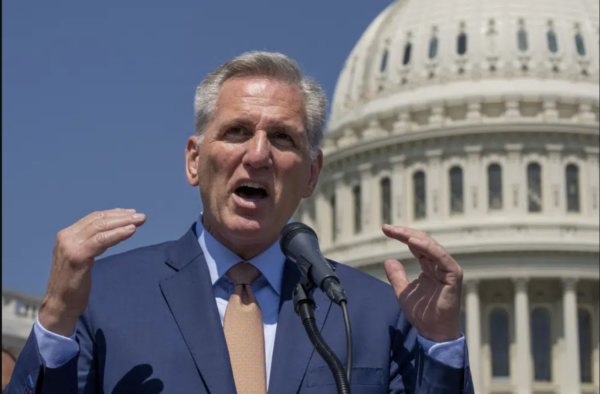The Treasury Department used “extraordinary measures” to avoid skipping bill payments when the U.S. government reached its $31.381 trillion borrowing limit in January.
The “x-date”—the date when such measures would be exhausted and the government may default if the borrowing ceiling is not lifted—began speculation. If the IRS gets enough in April from tax filers, the x-date might be June.
HOW BAD IS THIS?
It’s ominous.
After three months of no development, you might be worried. President Joe Biden and House Speaker Kevin McCarthy must negotiate a debt cap compromise soon to continue these accounting loopholes. McCarthy wants trillions of dollars in expenditure cuts over the decade for an increase, while Biden says Congress should not discuss government finances with the fear of an economy-wrecking default.

In recent weeks, the Democratic president and Republican congressional leader have tried to reassure the public that they don’t want the world’s largest economy’s government to default. McCarthy’s plan won’t pass the Democratic-majority Senate, but Biden has rejected McCarthy’s pleas for dialogue.
These negotiations often escalate and risk serious economic damage. Since the 1960s, 80 deals have raised or suspended the borrowing cap. Political polarization may cause the U.S. government to miss payments and cause a global economic collapse.
EXTRAORDINARY MEASURES?
The Treasury Department began a series of accounting maneuvers in January to freeze contributions and investment redemptions for government workers’ retirement and health care funds to keep the government open until June.
Suspending payments reduces debt, allowing the Treasury to fund government activities.
What happens if these “extraordinary measures” fail without a debt limit resolution is unknown. If faith in the U.S. Treasury note collapsed, markets would tumble and layoffs would rise.
HOW OFTEN?
“Treasury Secretaries in every Administration over recent decades have used these extraordinary measures when necessary,” Treasury Secretary Janet Yellen stated in her original letter outlining the actions.
The fiscal watchdog Committee for a Responsible Federal Budget reports at least 16 uses of the measures since 1985.
DEBT LIMIT: WHY?
Before WWI, Congress had to approve each bond issue. The debt ceiling was a way to fund the war without voting.
Since then, a tool designed to make government work better has caused partisan conflict and economic risk as the debt has grown.
Is the brinkmanship risky this time? It’s worrying, and Biden, McCarthy, and the Democratic Senate may not agree. A default may lead to millions of job losses, a major global recession, and higher interest rates that would make government debt management harder.
McCarthy’s plan, which Biden termed “wacko,” would damage children’s education, veterans’ health care, food aid for families and elders, and housing prices for the poorest households, according to a White House analysis. The president’s March budget plan would cut deficits by nearly $3 trillion over 10 years by raising taxes on the wealthy and companies.
“America is not a deadbeat nation,” Biden remarked. “Avoid default.”
McCarthy defended his plan on Fox News on Sunday by saying that even Sen. Joe Manchin, D-W.V., supported a 1% discretionary spending cap. McCarthy said Biden was risking default by ignoring discussions.
McCarthy added, “The idea that he won’t even negotiate for more than 80 days is now putting the country in default. “Only we are responsible and sensible.”

